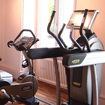TP 1 - Reading
Upper Intermediate level
Description
Materials
Main Aims
-
To provide reading practice for gist and detail in the context of worst case scenarios.
Subsidiary Aims
-
To provide clarification of vocabulary related to emergency situations that might be useful to Ss.
-
To provide fluency speaking practice in a discussion in the context of emergencies and worst case scenarios.
Procedure (39-45 minutes)
Show slide 1 of a tornado. Tell students a personal anecdote about tornadoes and how I was told “worst case, we do this…” to prepare for a tornado in school. Do you have any experience with worst-case scenario preparations? Ask students to share their experiences with the class.
— Use slide 2 &3 to pre-teach key vocabulary important for understanding the article by matching photos to definitions/examples. Photo 1 & 2: Wound (/wo͞ond/) & splint CCQs: Is someone hurt? (yes) Is the skin broken? How do we know? (yes, its bleeding) Would we call a small scratch a wound? (No) FCQ: Can it be a verb as well as a noun? Yes: He was wounded in battle. Pron: Long oo CCQs: What is similar to this? What’s the difference? (A cast wraps all the way around, brace allows for movement) Is a splint hard or soft? (Hard) FCQ: Can it also be used as a verb? Yes: His leg was splinted; splinting to splint. Photo 3 & 4: Debris (/dəˈbrē,ˌdāˈbrē/) & Kneel CCQs: Is this structure in pieces or is it whole? (pieces) Are the pieces loose on the ground? (Yes) Can you still use them? (Maybe, but not likely to rebuild the structure) FCQ: What verbs can be used with the word debris? (Active) Clear out, clear away; (Passive voice) Can we say, “She was hit by debris”? Yes. CCQs: Are they standing up? (No) Are they sitting down? (No) What body part is touching the ground? (Knees) FCQ: What prepositions can be paired with kneel? Kneel on/ by/ down/ over Pron: The K is silent, like in Knight, Knome
- Show article and ask students to guess the title based on what they are going to read. - Show gist task on Google Forms. Concept check if necessary 'deal with ': take action relating to/about something; ‘treat’: not candy, but give medical care; Scenario: specific possibility. You have 3 minutes to read quickly and choose the best title from the selection below: o How to treat injuries. o Dealing with emergencies. o Worst case scenarios. (Correct answer) - Give Ss 1-2 minutes to compare answers in pairs in BORs. OCFB
- Tell Ss they will now be reading individually for detailed understanding. Screenshare Google Form. Tell Ss the answers are not always fully stated in text, they may have to read 'between the lines' (e.g., #2, #5, #6). Ask them focus on finding the answers and ignore words they don't know that aren't relevant. But you can use a dictionary to check one or two unknown words (point out link to Cambridge dictionary online link in Google form). Work on your own. You have 7-8 minutes. ICQs: How long, in pairs or individually? 1. Why shouldn’t the splint on a broken leg be too tight? (Line 17) Answer: Because it might reduce/stop/cut off circulation/ the flow of blood. 2. Why do you think the kitchen is a dangerous place in an earthquake? (Line 28). Answer: Because there are machines using electricity and gas, and there is a danger of fire. 3. Why do you think hallways and inside walls are safer during an earthquake? (Line 26-27) Answers: Hallways are enclosed and provide protection from falling debris; No glass to break and cut you; No furniture to fall over. 4. Why should you remove your shirt or hat if a bull runs at you? (Line 47-48) Answer: To distract them. - 5.Why is it helpful to count the time between lightning and thunder? (Line 59-60) Answers: It tells you how near the storm is. 6. Why do you think you should kneel rather than lie flat on the ground to avoid lightning? (Line 63-64) Answer: If you lie flat, your body has a larger surface area; aka, there is more of your body for the lightning to strike. - Give Ss 1-2 mins to compare answers in BORs or private chat. - OCFB (might go over time)
- Tell Ss they will be giving a short talk about one of the topics (a or b but not both) (They can make this up!). Ask Ss which topic they'd like to talk about. ICQ: how many topics? One. Does it have to be a real story? No. You have one minute to make notes in response to the questions (try to use some of the new vocab). When one minute is up, say: you will be speaking for one-two minutes so your partner should time you. (I’ll try to send reminders) When max two minutes is ended, ask the speaker a question. Put Ss in BORs for 7-8 minutes. A. Describe a time you treated a friend for a broken leg. You should say: - What happened – give us background! o Who are they? o How did they break their leg? When & where? o What did you do to help? B. Describe a time you saved a friend from being struck by lightning. You should say: - What happened – give us background! Who are they? When and where did this happen? What did you do to help? - Monitor and write examples of good language or errors on post it’s on a Jamboard. - FB on their ideas, ask if there were any similarities or differences – 2-3 mins. - DEC in OC – 5 mins.

